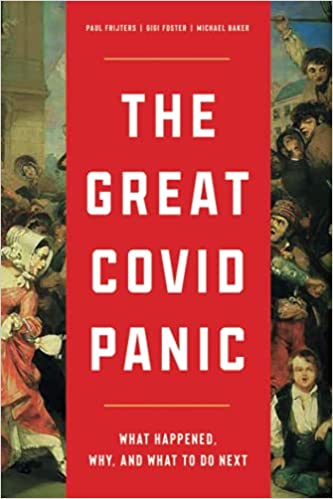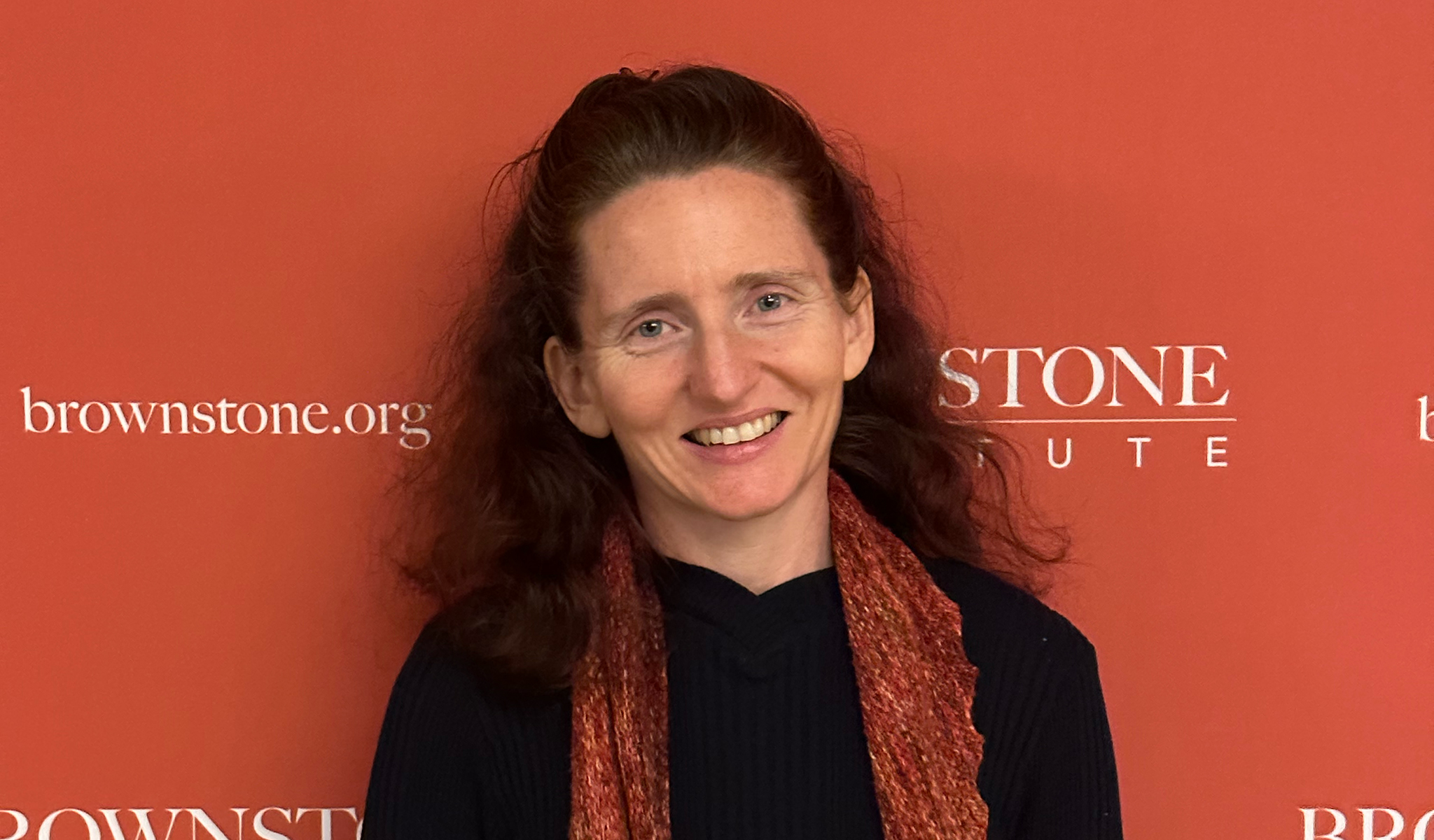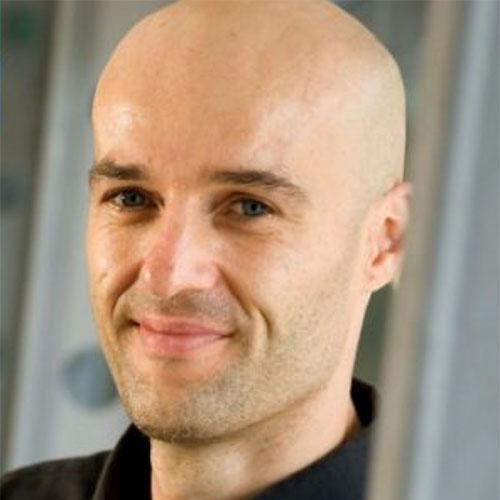Fear is an emotion everyone experiences. In mammals, fear’s home is the amygdala in the limbic system and, evolutionarily speaking, it is a very old part of the brain. Its function is to alert the animal to a threat to life or something else of value, such as offspring, territory or mating rights.
One of the important rules about how fear works is that the fearful individual focuses obsessively on the feared object. There is a good evolutionary reason for this: when in danger it is important not to get distracted by other things and to focus 100 percent on the threat and how it can be extinguished. Politicians, businessmen and others in the right place at the right time can exploit this by promising fearful people a solution and then robbing them when they are not looking. Such robberies need not be confined to money — much more darkly, they can be stealing things that are harder won and harder to win back, like personal freedoms and human rights.
Fearful individuals are not usually very good at weighing probabilities objectively. A person’s perception of the importance of a threat is directly related to the number of incoming messages about it that she receives. Dangers with an infinitesimally small likelihood, like an asteroid hitting the earth, can be perceived as imminent by a person under continuous bombardment with images of an asteroid hitting the earth.
Incompetence at measuring the seriousness of a threat other than by the number of related messages that arrive also means that the objects people fear are somewhat random and highly socially determined. Fear comes in social waves, like fashion trends. Simply by talking about what they fear and incessantly sharing images about those things, people spread their own private fears to those they know. The nature of fear as a contagious social wave is juiced by imagery, because images of things to fear are easier than verbal expressions to disseminate and understand.
The Great Panic illustrated both the tendency of those in power to use fear to extend their control, and the social wave nature of fear itself. Images of sick patients created a panic inside China. Images of Chinese people being dragged away for the supposed safety of others went viral, giving the entire world an image of how authorities needed to react to the threat. Day after day, TV audiences were pelted with images of immobilised patients being wheeled into hospital emergency rooms. The message was, ‘This is what becomes of you if you don’t do what the government demands’.
Governments, we now know, deliberately created images to amplify danger, such as when UK health authorities used ‘panic posters’ on many street corners with pictures of struggling hospital patients wearing ventilator masks and carrying captions that would invoke shame, guilt and general stress, like ‘look him in the eyes and tell him you always keep a safe distance.’
Graphs depicting projections of large numbers of deaths, often based on worst-case scenarios, were presented to parliamentary committees to persuade legislators — as if they needed any persuading — to restrict their people’s freedoms and subject them to greater government control. In May 2021, some of the UK scientists involved in those early fear campaigns apologised for being unethical and totalitarian.
The public was also subjected daily to images of increasingly rumpled and bleary-eyed politicians behind microphones at their media conferences, shoulder to shoulder with their competitively rumpled and bleary-eyed health advisors, delivering ever-worsening news and using it to justify more severe directives to control people’s behaviour.
Another fundamental tendency of fear is to make people eager to sacrifice something in order to defeat the perceived threat. Strange as it is to a rational mind, fearful people automatically presume that if they give up something important to them, then this action will help to reduce or remove the peril. For this reason, throughout human history, people have sacrificed the things most dear to them in order to avert a perceived threat.
The Aztec civilization in Mexico, for example, believed that the sun god was in constant battle with darkness, and if darkness triumphed the world would end. To prevent that undesirable state of affairs, the sun god had to stay on the move, which the Aztecs had figured out required an energy output that could only be sated by a steady diet of their citizenry’s blood and guts.
Prehistoric farmers sacrificed their children to ‘buy’ rain or a good harvest, believing that a satisfactory level of appeasement would avert starvation. Greeks, Romans, Vikings and Chinese sacrificed meat and other foods in exchange for luck in war, luck in love, or anything else they fancied.
This logic underpins the first part of the Politician’s Syllogism: ‘We must do something.’ It is not truly rational to believe that every problem necessitates the doing of something, but to a fearful person the desire to have something done is overwhelming. Rationality would demand an analysis of what can actually be done about a threat, which has the potential to conclude that nothing can be done. One can fear a hurricane but logic does not dictate that something can be done to change its course. Yet to a person possessed by fear of the hurricane, that is unacceptable. Almost any scheme that purports to redirect the hurricane by offering up some kind of sacrifice will start to sound very appealing.
We saw this tendency repeatedly during the Great Panic. It is a classic religious response.
Stopping children from going to school was something that could be done, so sacrificing the education of children and the productive time of their parents shifted, sometimes in the space of just a few days, from being something that no one thought was worthwhile into something that was 100 percent essential.
Taking everyone’s temperature before letting them into a supermarket was another thing that could be done, so although it is intrusive and people have variable temperatures for all kinds of reasons that have nothing to do with an infectious illness, it moved from the ‘no evidence that it helps’ column to the ‘obvious, compulsory, and enforced’ column, with little objection from those being subjected to it.
Similarly, travel restrictions, obsessive surface cleaning, testing, tracking-and-tracing, restrictions on business operations, quarantining of individuals in hotels and purpose-built camps, separation between persons inside buildings, restrictions on exercise and many other directives started to sound necessary and obvious to the ears of whole populations, regardless of their logical or proven efficacy.
In a further slap in the face to evidence-based policy making, when existing restrictions didn’t work in controlling infections, governments automatically concluded that the restrictions weren’t tight enough and doubled down on them, tightening controls and adding new ones. This behaviour was repeated over and over during 2020-21. The Covid god is an angry and rapacious one, and He seems to demand ever larger sacrifices.
For some of the less disruptive interventions, the WHO itself was a principal co-conspirator. In its 2019 guidelines on non-pharmaceutical public health measures during influenza pandemics, WHO recommended the use of face masks and surface- and object-cleaning even while admitting that there was no solid evidence of their effectiveness. There was, however, ‘mechanistic plausibility for the potential effectiveness [of the measures]’.
In other words, ‘we can think up a story of how it might help, so let’s do it’. In this way, the pre-pandemic WHO guidelines killed two birds with one stone by recommending sacrifice and satisfying the second and third parts of the Politician’s Syllogism (‘This is something. Therefore we must do this.’). It even threw in a possible causal link between the sacrifice and the feared threat, as a bonus.
Scientists studying fear do not really know why humans have this innate belief that sacrifice will help avert a threat, but one possibility is that it is a leftover element of the ‘lizard part’ of our brain. Lizards drop their tails when pursued by a predator in order to distract that predator and escape. Perhaps this tendency is still a part of humanity, following the same basic logic: ‘Let’s give up something very important and hope it appeases whatever threatens us’.
There are other possible explanations for why humans have this reflexive sacrificial response to fear. Perhaps fearful people automatically follow whichever person has a plan and is actively doing something, because their own information is limited and they can reasonably expect that someone taking methodical action knows more than they do about how to overcome the danger. This subservient behaviour becomes increasingly entrenched over time as the ones with the action plan recognise the magnitude of their power and repeatedly move to extend it.
This logic does not explain why people are drawn to sacrifice something of value but at least it might explain why they are prone to believing that ‘Something must be done’, since that adage is a simplified version of ‘We must do whatever someone with a plan wants to be done’. A similar explanation for the appeal of the Politician’s Syllogism is that doing something, anything, feels like taking control over the perceived threat, even if that control is purely symbolic.
Whatever the deeper reason, the tell-tale sign of the sacrificial reflex associated with human fear is disinterest among the fearful in the mechanism by which the sacrifice actually helps avert the danger. It is simply seen as axiomatic that the sacrifice helps. So, while many believe that face masks are to viruses what garden gates are to mosquitoes, people possessed by fear of infection are quite prone to believing that a face mask will prevent infection, because wearing one is doing something.
While locking down the elderly will accelerate the progress of degenerative diseases like dementia and increase the susceptibility of this already vulnerable group to other health problems, frightened people accept automatically that incarcerating them will save them from infection. While the repeated scrubbing of surfaces with chemical disinfectants is expensive, disruptive and environmentally damaging, this too is automatically assumed by the fearful to be a sacrifice worth making.
A fearful public will usually view information about how some measure will actually help to alleviate a threat as merely a bonus, not a requirement. The more painful the measure, the more likely they believe it will help – simply because it is more painful.
This ambivalence about the connection between a measure and its effectiveness makes it extremely difficult to question on scientific grounds a measure that has been successfully sold to the fearful as an appropriate sacrifice. It is nearly impossible to ask for scientific evidence or even suggest that there should be a rational discussion about it, and expect to be taken seriously.
During the Great Fear and on through the Illusion of Control phase of the Covid era, anyone who didn’t automatically go along with a new sacrifice for Covid was apt to be regarded as a dangerous heretic and quickly howled down by a baying public.
We saw this bullying repudiation of rational discourse time and again, in the twitterstorms against lockdown sceptics, in the millions of furious comments under news media articles, in the daily sermons of government officials and their health advisors, and in every other forum that could be co-opted by the crowd to express its disapproval of Those Who Dared to Differ.
Another key aspect of fear is how widely people vary in their susceptibility to different types of fear. This is partly a matter of learning and partly a matter of programming. Some people are innately very fearful beings, easily scared by many things and highly risk-averse, while others are truly afraid of very little.
Fear can also be learned. People who have had a very bad experience will fear a repeat, and become frightened by stimuli that remind them of that experience. Humans in this sense are just like Pavlov’s dog. We can be trained to experience fear of nudity, blood, zombies, social shame, particular foods, particular skin colours, sounds or smells. None of these things is feared by a newborn baby, but over time we humans learn to fear them as our carers and our experiences teach us that these things are associated with bad outcomes.
Fear can also be unlearned, but this takes effort and time. It requires that we confront and ‘make our peace’ with bad experiences, pain, loss, or the death of a loved one. For example, we can consciously expose ourselves to feared stimuli, as in ‘exposure therapy’ to treat anxiety disorders. We can get into the habit of telling ourselves it is just not all that bad. We can learn to ridicule what we once feared, taking the edge off that fear. Some people find this easier to do than others, but in essence we can train ourselves to counter the feeling of fear and even to welcome things that once terrified us, including pain and death.
This learning and unlearning of fears is highly social, and thus something that can operate at the level of a whole society. Partly it is about general narratives: a society can choose a more relaxed narrative around death, or a more fearful one. One might say that societies can opt to become lions that are masters of their own story of death, or they can be sheep.
During the Great Panic of 2020, many countries adopted and nurtured new fears, while some displayed more lion-like behaviour and were reluctant to be drawn into the frenzy. Some US states such as South Dakota rejected the fear narrative, as did a small handful of countries including Taiwan and Japan, both of which avoided widespread lockdowns.
Belarus took a freewheeling approach, as did Tanzania, where the country’s president, the late John Magufuli, made Covid an object of national ridicule by speaking to the media about how Covid testing had returned positive results for a goat and a papaya.
There is hope in this malleability of fear. With conscious effort, societies can unlearn what they feared before. Ridiculing or otherwise confronting what was previously feared, and openly dismissing it, can slowly remove the fear. This is shown to be possible by the total disappearance of fears that transfixed whole populations in past centuries.
Fear of vampires used to be ubiquitous in Eastern Europe but is now a distant memory. In other regions, fears of voodoo, giants, dwarfs, dragons, basilisks, the devil and evil spirits were once rampant. What removed them was an active policy by the authorities to discredit those beliefs and to insist on a more scientific approach to understanding the world.
If fear can be neutralised, the question becomes what kind of mechanisms our society can adopt to perform this neutralisation, and thereby prevent a wave of fear from overcoming our societal defences.
In all cases when populations become very afraid of something, some people work out how to benefit from those fears. In previous centuries, quacks sold amulets containing amber, jade and other gemstones, allegedly to ward off evil spirits and vampires. An English surgeon named Dale Ingram remarked that during the Bubonic plague outbreak in London in 1665, ‘There was scarce a street in which some antidote was not sold, under some pompous title’.
During the Great Panic, we saw the emergence of salesmen peddling all kinds of new treatments that offered hope of protecting us against infections. At the more primitive end of the continuum, these included African shamans selling magic water, but the inventory of remedies was modernised for the 21st century and also embraced far more lucrative industries. The Covid testing business was one example, protective equipment was another.
Whole industries either emerged or were greatly strengthened during the Great Panic and developed a vested interest in the fear being perpetuated indefinitely. Flourishing e-commerce businesses supplied people with the items they needed to remain bunkered at home for an unlimited period. Across the world, squadrons of sweaty individuals on two wheels, freshly empowered by governmental measures to throttle the ‘normal’ economy and promote technological solutions, buzzed around cities making home deliveries of groceries, prepared meals and other delights to keep stomachs full and arses wiped.
Both in fiction and in history, fear has been used by politicians to gain control over populations. In fiction, the aspiring dictator promises a solution for a threat over which the population obsesses. That proposed solution invariably involves more power for the aspiring dictator, which citizens notice too late to be able to avert or roll back.
This basic storyline occurs in George Orwell’s 1984, in which a society is controlled by the fear of competing superstates. This theme also shows up in the film V for Vendetta, wherein an elite rises to power through poisoning its own people, and of course in Star Wars, where the evil Palpatine becomes emperor during a war he created.
In real life, the use of fear to gain power has been observed many times. Hitler used fear of communists and Jewish bankers. The Emperor Augustus brought an end to the 400-year-old Roman republic and became supreme ruler by promising to stamp out lawlessness, property theft and political gridlock. The public were unfazed by the fact that Augustus had been an eager participant in the evils he vowed to eliminate. They just followed the promise of peace.
The industry of fear maintenance is central to the political economy of Covid. Politicians grabbed more power while health and technology companies made fantastic profits by exploiting fearful populations that either looked away or made enormous sacrifices willingly so as to appease the object of their fear.
This piece is excerpted from The Great Covid Panic (Brownstone, 2021)
Join the conversation:

Published under a Creative Commons Attribution 4.0 International License
For reprints, please set the canonical link back to the original Brownstone Institute Article and Author.












